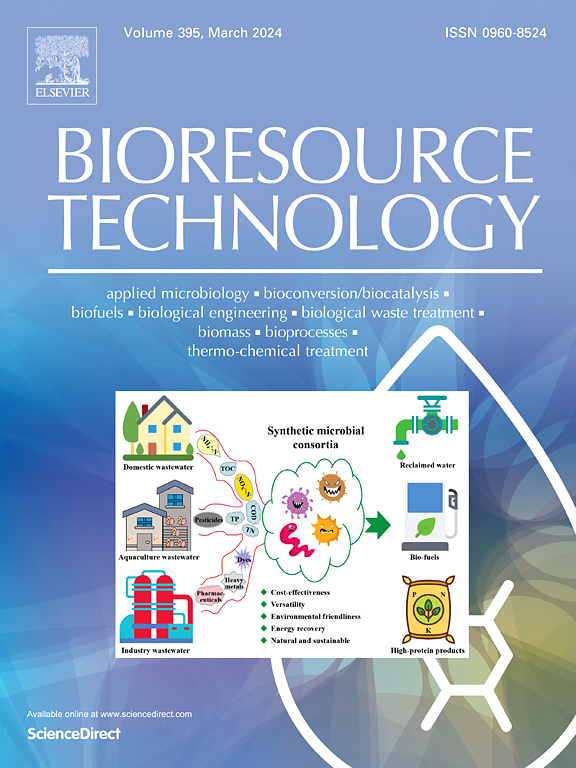Deciphering the key role of biofilm and mechanisms in high-strength nitrogen removal within the anammox coupled partial S0-driven autotrophic denitrification system
IF 9.7
1区 环境科学与生态学
Q1 AGRICULTURAL ENGINEERING
引用次数: 0
Abstract
Anammox coupled partial S0-driven autotrophic denitrification (PS0AD) technology represents an innovative approach for removing nitrogen from wastewater. The research highlighted the crucial role of biofilm on sulfur particles in the nitrogen removal process. Further analysis revealed that sulfur-oxidizing bacteria (SOB) are primarily distributed in the inner layer of the biofilm, while anammox bacteria (AnAOB) are relatively evenly distributed in inner and outer layers, with Thiobacillus and Candidatus Brocadia being the dominant species, respectively. Except for anammox and PS0AD processes, 15N isotope labeling tests determined that sulfur reshaped nitrogen metabolism pathways, providing solid evidence for the occurrence of sulfammox process. SOB and AnAOB collaborate in nitrogen and sulfur conversion, with SOB-drived PS0AD processes reducing nitrate to nitrite for AnAOB to remove ammonia. Conversely, the nitrate produced from anammox process can be reused by SOB. Metagenomic analyses verified that SOB drove the PS0AD process through encoding soxBYZ gene, while AnAOB might play an important role in simultaneously driving the anammox and sulfammox processes. These findings underscore the importance of biofilm and clarify the nitrogen-sulfur cycle mechanisms within the coupled system.

解析厌氧氨氧化耦合部分s0驱动自养反硝化系统中生物膜在高强度脱氮中的关键作用和机制。
厌氧氨氧化耦合部分硫酸盐驱动的自养反硝化(PS0AD)技术代表了一种从废水中去除氮的创新方法。该研究强调了生物膜对硫颗粒在脱氮过程中的关键作用。进一步分析发现,硫氧化菌(SOB)主要分布在生物膜的内层,厌氧氨氧化菌(AnAOB)在生物膜的内层和外层分布相对均匀,硫杆菌(Thiobacillus)和布罗卡迪菌(Candidatus Brocadia)分别为优势菌种。除厌氧氨氧化和PS0AD过程外,15N同位素标记试验确定硫重塑了氮代谢途径,为磺胺肟过程的发生提供了坚实的证据。SOB和AnAOB协同进行氮和硫的转化,SOB驱动的PS0AD工艺将硝酸盐还原为亚硝酸盐,AnAOB去除氨。相反,厌氧氨氧化过程产生的硝酸盐可以被SOB重复利用。宏基因组分析证实,SOB通过编码soxBYZ基因驱动PS0AD过程,而AnAOB可能在同时驱动厌氧氨氧化和磺胺氧化过程中发挥重要作用。这些发现强调了生物膜的重要性,并阐明了耦合系统中氮-硫循环机制。
本文章由计算机程序翻译,如有差异,请以英文原文为准。
求助全文
约1分钟内获得全文
求助全文
来源期刊

Bioresource Technology
工程技术-能源与燃料
CiteScore
20.80
自引率
19.30%
发文量
2013
审稿时长
12 days
期刊介绍:
Bioresource Technology publishes original articles, review articles, case studies, and short communications covering the fundamentals, applications, and management of bioresource technology. The journal seeks to advance and disseminate knowledge across various areas related to biomass, biological waste treatment, bioenergy, biotransformations, bioresource systems analysis, and associated conversion or production technologies.
Topics include:
• Biofuels: liquid and gaseous biofuels production, modeling and economics
• Bioprocesses and bioproducts: biocatalysis and fermentations
• Biomass and feedstocks utilization: bioconversion of agro-industrial residues
• Environmental protection: biological waste treatment
• Thermochemical conversion of biomass: combustion, pyrolysis, gasification, catalysis.
文献相关原料
公司名称
产品信息
阿拉丁
<sup>15</sup>NaNO<sub>3</sub>
阿拉丁
<sup>15</sup>NH<sub>4</sub>Cl
阿拉丁
<sup>15</sup>NaNO<sub>3</sub>
阿拉丁
<sup>15</sup>NH<sub>4</sub>Cl
 求助内容:
求助内容: 应助结果提醒方式:
应助结果提醒方式:


